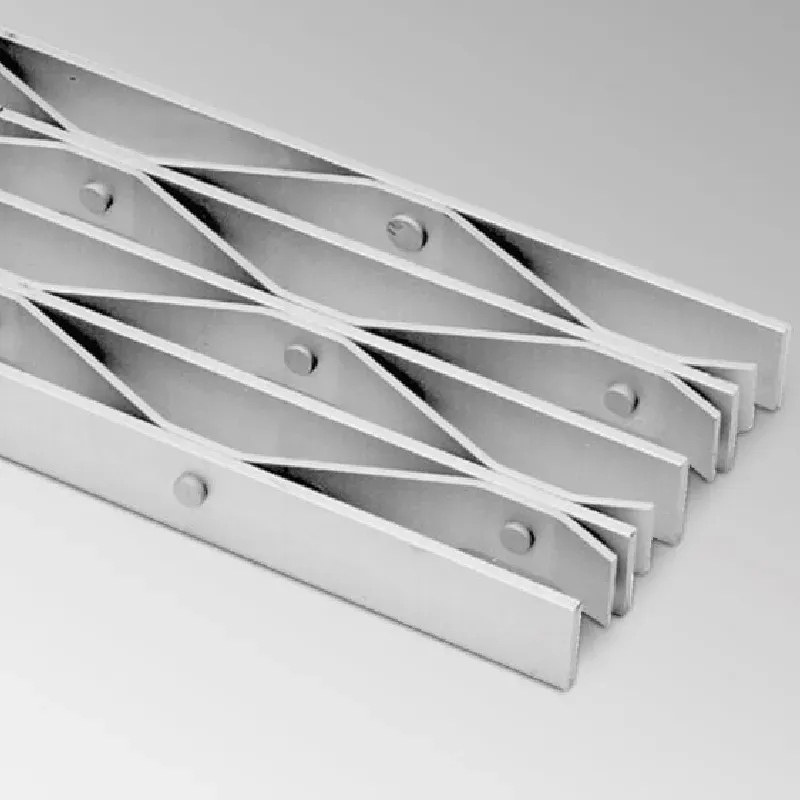- Industrial zone, South of Anping Town, Hengshui, Hebei, China.
- sales@hfpetromesh.com
- +86-18931809706
Steel Grating Dimensions and Sizes for Various Applications and Industries
Understanding Steel Grating Sizes A Comprehensive Guide
Steel grating is an essential component utilized across various industries, including construction, manufacturing, and transportation. Its primary function is to provide a robust and durable surface for walkways, platforms, and more. Understanding the sizes and specifications of steel gratings is crucial for selecting the right type for specific applications. This article aims to provide an in-depth overview of steel grating sizes, their applications, and considerations when choosing the appropriate grating for your needs.
What is Steel Grating?
Steel grating is made from stainless steel, carbon steel, or aluminum and is characterized by its open mesh structure. This design allows for the safe passage of fluids and light while providing strong support for foot and vehicular traffic. Common forms of steel grating include welded, swage-locked, and pressure-locked configurations. Each type has its unique characteristics, but they all serve the same fundamental purpose safety and strength.
Standard Steel Grating Sizes
Steel gratings come in various sizes and configurations, tailored to suit a range of applications. The dimensions typically refer to the width between the load-bearing bars and the overall thickness of the grating. Some common sizes include
- Width Standard widths are often 24 inches and 36 inches, with other sizes available depending on the manufacturer and application. - Thickness The thickness of steel gratings can vary significantly. Common thicknesses include 1 inch, 1.5 inches, and 2 inches, with some heavy-duty applications requiring thicker options. - Bearing Bar Spacing This refers to the distance between the load-bearing bars and commonly ranges from 15/16 inches to 1-1/2 inches. - Open Area The open area percentage can range anywhere from 50% to 75%, offering different levels of drainage and visibility depending on the design requirements.
It is essential to select a size that meets both safety and load requirements based on the installation location
.Load Ratings
steel grating sizes

Steel grating sizes also play a vital role in determining load ratings. The load rating indicates how much weight the grating can support without bending or breaking. Common load classes include
- Light Duty Suitable for pedestrian traffic and light equipment; typically rated for loads of up to 1,000 pounds per square foot. - Medium Duty Appropriate for areas with occasional vehicular traffic; generally rated for loads of up to 2,500 pounds per square foot. - Heavy Duty Designed for industrial applications where heavy machinery and continuous traffic are expected; capable of handling loads exceeding 5,000 pounds per square foot.
When selecting the appropriate size and load rating, it's crucial to consider the specific demands of the environment in which the steel grating will be installed.
Factors Influencing Grating Size Selection
1. Application Type Different applications require different grating sizes. For example, walkways in warehouses may need a different size compared to grating used on bridges or platforms. 2. Environmental Conditions External factors such as rain, snow, and ice can influence the type of grating required. Consider grating with a textured surface for better slip resistance in wet conditions.
3. Maintenance Needs More open gratings may require less maintenance since debris can fall through more easily, but closed designs might be necessary for certain aesthetic or functional purposes.
4. Regulatory Standards Always check local regulations and industry standards to ensure that the selected steel grating size meets safety requirements.
Conclusion
Choosing the right steel grating size is crucial for ensuring safety, durability, and functionality in a given application. By understanding the various dimensions, load ratings, and influencing factors, you can make an informed decision that meets your project’s specific needs. Whether for a pedestrian walkway, a heavy-duty industrial application, or a decorative element, there is a steel grating size that perfectly fits your requirements. Always consult with a professional supplier to explore options and ensure compliance with all relevant standards. By doing so, you pave the way for a successful and safe implementation of steel grating in your projects.
-
The Power of Pyramid Shaker Screen - A 3-Dimensional SolutionNewsOct.24,2024
-
Exploring the Versatility and Durability of Steel GratingNewsOct.24,2024
-
Revolutionizing Drilling Efficiency with Steel Frame Shaker Screens for Mud Shale ShakersNewsOct.24,2024
-
Potential of Shale Shaker ScreensNewsOct.24,2024
-
Offshore Pipeline Counterweight Welded Mesh - Reinforced Mesh in Marine EngineeringNewsOct.24,2024
-
Revolutionizing Offshore Pipeline Stability with Concrete Weight Coating MeshNewsOct.24,2024
